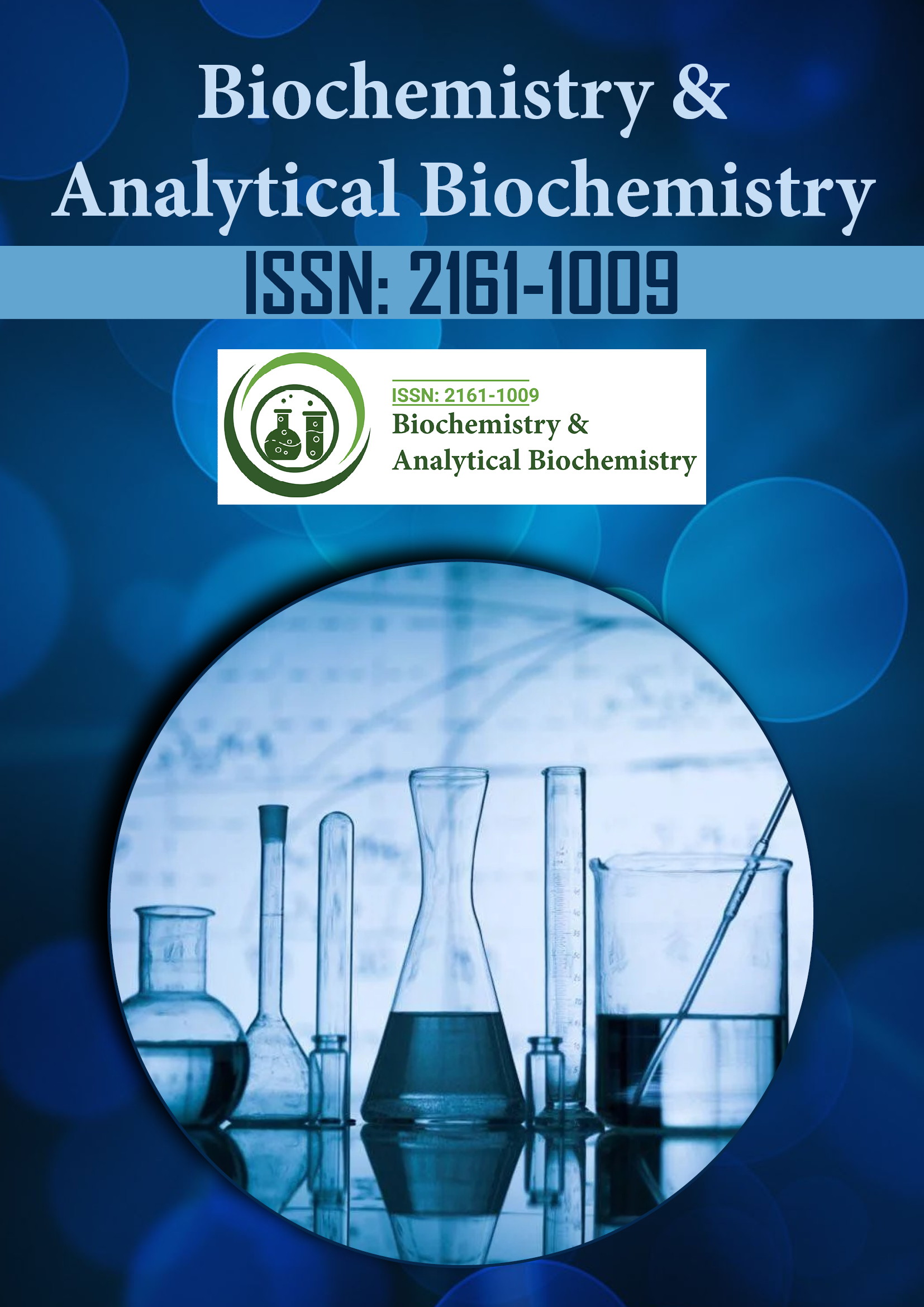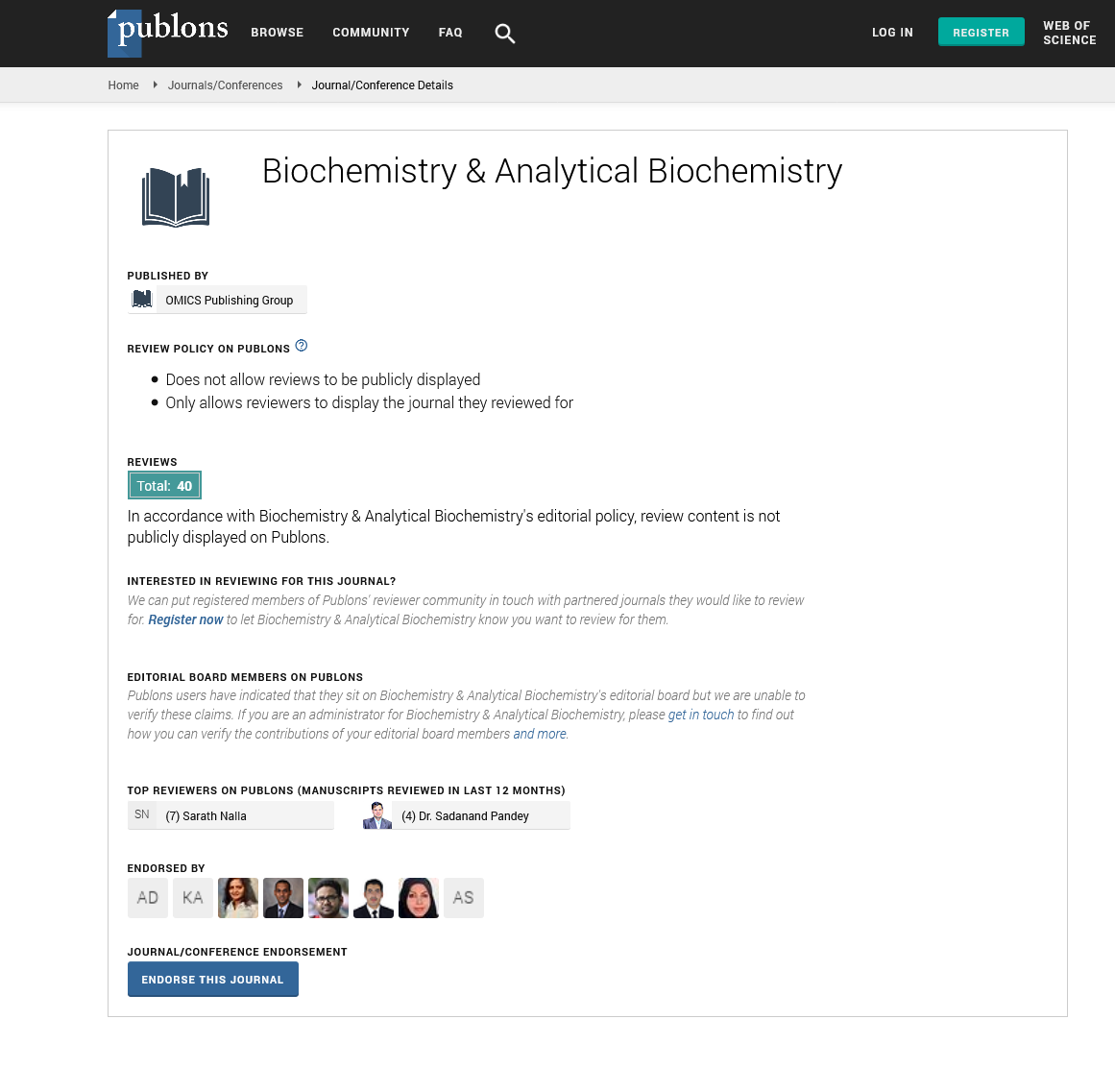Indexed In
- Open J Gate
- Genamics JournalSeek
- ResearchBible
- RefSeek
- Directory of Research Journal Indexing (DRJI)
- Hamdard University
- EBSCO A-Z
- OCLC- WorldCat
- Scholarsteer
- Publons
- MIAR
- Euro Pub
- Google Scholar
Useful Links
Share This Page
Journal Flyer

Open Access Journals
- Agri and Aquaculture
- Biochemistry
- Bioinformatics & Systems Biology
- Business & Management
- Chemistry
- Clinical Sciences
- Engineering
- Food & Nutrition
- General Science
- Genetics & Molecular Biology
- Immunology & Microbiology
- Medical Sciences
- Neuroscience & Psychology
- Nursing & Health Care
- Pharmaceutical Sciences
Opinion Article - (2023) Volume 12, Issue 6
Exploring the Symbiosis of Enzymology and Metabolism
Davis Rami*Received: 27-Nov-2023, Manuscript No. BABCR-23-24439; Editor assigned: 29-Nov-2023, Pre QC No. BABCR-23-24439 (PQ); Reviewed: 14-Dec-2023, QC No. BABCR-23-24439; Revised: 20-Dec-2023, Manuscript No. BABCR-23-24439 (R); Published: 28-Dec-2023, DOI: 10.35248/2161-1009.23.12.525
Description
Biochemical activities is orchestrated by the dynamic interaction of enzymology and metabolism. Enzymes, or molecular catalysts, intricately regulate and accelerate metabolic events, guaranteeing a smooth flow of energy and molecular building blocks throughout living organisms. This interconnected network of enzyme activities drives critical metabolic processes ranging from food degradation to energy production and biosynthesis. Understanding the specific roles of enzymes in defining the metabolic landscape is a significant goal that reveals of cellular function, adaptation, and, ultimately, the vitality of biological systems. Enzymes emerge as the conductors of life's molecular orchestra in this complicated symphony.
Enzymology and metabolism are two sciences that are inextricably linked and hold the key to understanding the complicated biochemical processes that underpin life. Enzymes, or catalysts of biological reactions, organize cell metabolism, allowing nutrients to be converted into energy, necessary molecules to be synthesized, and waste products to be eliminated. This study explore the interesting relationship between enzymology and metabolism, emphasizing their critical roles in the maintenance of life and putting insight on recent advances in these domains.
Enzymes are highly specialized proteins that help biological reactions by lowering the activation energy necessary for the reaction to take place. They do this by attaching to certain molecules known as substrates and accelerating their transformation into products. Enzymes are required for the delicate balance of metabolic pathways and the effectiveness of cellular functions.
An enzyme's active site complements the shape, charge, and functional groups of its substrate, allowing for accurate molecular identification. This specificity is essential for the regulation and coordination of metabolic events, limiting undesirable side effects and guaranteeing proper route advancement.
Metabolism is the sum of all chemical events that take place within a living organism. It is divided into two interrelated processes: catabolism and anabolism. Catabolism is the process by which complex compounds such as carbohydrates, lipids, and proteins are broken down into smaller units, generating energy in the process. Anabolism, on the other hand, refers to the use of energy in the creation of complex compounds from simpler predecessors.
The sophisticated network of metabolic pathways allows Adenosine Triphosphate (ATP), the fundamental energy currency of cells, to be produced. ATP is responsible for cellular functions such as muscular contraction, active transport, and biosynthesis. Furthermore, metabolism provides the building blocks for the production of biomolecules such as nucleic acids, proteins, and lipids, all of which are essential for cellular structure and function.
Enzymology is critical to deciphering of metabolism. Researchers can unravel the intricate principles behind metabolic pathways, elucidate the regulation of enzyme activity, and uncover possible therapeutic targets by examining enzymes. Furthermore, developments in enzymology techniques, such as structural biology, have allowed for the determination of enzyme structures at atomic resolutions, revealing important insights into their catalytic functions. Recent enzymology advancements have shed light on a variety of metabolic problems and diseases. Specific enzyme deficiencies or mutations can alter metabolic pathways, resulting in a variety of health problems. Scientists can develop targeted therapeutics and design innovative medications to restore metabolic balance by studying the underlying enzymatic abnormalities.
Because of the similarity between enzymology and metabolism, enzyme modulation techniques have been developed as potential therapeutic approaches. Enzyme inhibitors, for example, can selectively reduce the activity of certain enzymes implicated in disease processes, providing a focused strategy for treating a wide range of illnesses. Enzyme activators, on the other hand, can increase the activity of specific enzymes, compensating for deficits and restoring metabolic function.
As technology advances, the sciences of enzymology and metabolism are set to make even more discoveries. Integrated techniques that combine genomes, proteomics, and metabolomics will provide a thorough understanding of metabolic networks and enzyme activity. Furthermore, the use of computer modeling and artificial intelligence will make it easier to forecast enzyme characteristics, develop new catalysts, and optimize.
Citation: Rami D (2023) Exploring the Symbiosis of Enzymology and Metabolism. Biochem Anal Biochem. 12:525.
Copyright: © 2023 Rami D. This is an open-access article distributed under the terms of the Creative Commons Attribution License, which permits unrestricted use, distribution, and reproduction in any medium, provided the original author and source are credited.

